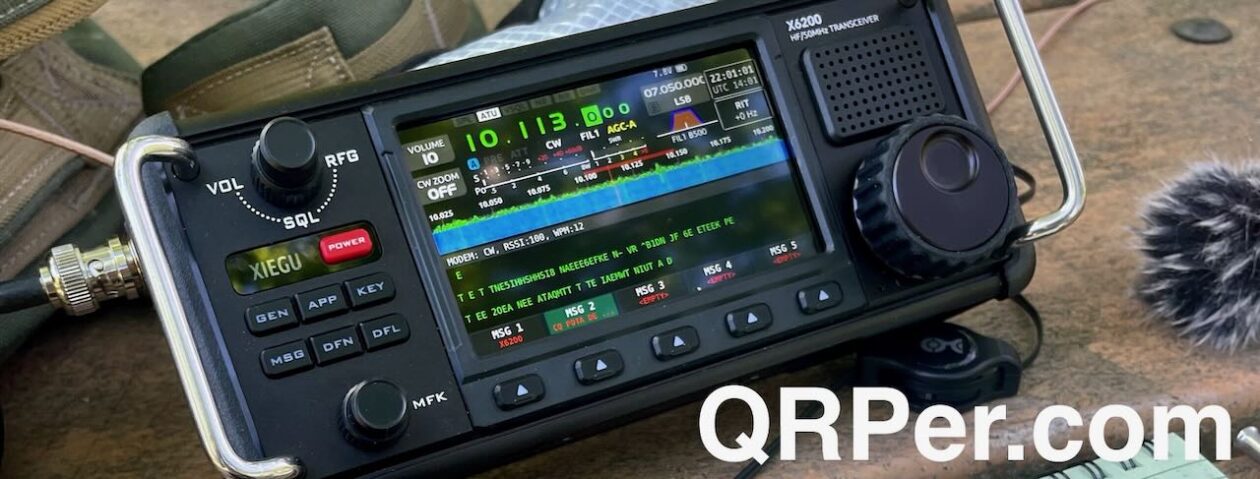Activating on the Road: Gems Along the Way – Part 2
by Brian (K3ES)

This article continues my series from our 2024 road trip across the United States (Six Weeks and 7300 Miles: Activating on the Road). I hope to wrap up the series with one or two more articles (not yet written) over the next few weeks. In this report, I plan to cover some of the parks and places we found during the trip that were interesting and spectacular beyond our expectations.
As we traveled across the country from Pennsylvania to California and back, we spent a lot of time looking for parks to activate, and sights to see. While we tried to keep the sights and parks interesting, some of them were unexpectedly amazing, and I would like to share a few of those here. Part 2 covers our east-bound trip homeward to Pennsylvania.
Tehachapi Loop, CA

The Tehachapi Loop is a railroad wonder constructed from 1874 to 1876 to ease the grade for the Southern Pacific rail line, as it crosses over Tehachapi Pass. The Loop is located on the western side of the pass, near Bakersfield, CA, and it consists of a helical track section that enables the head of the train to pass over the trailing end as it moves up the grade. This is, of course, reversed for a train headed down the hill. Through the ¾ mile loop, the train gains or loses 77 ft of elevation, and the loop’s extra distance along the grade permits the train to ascend or descend a more gradual slope.
On the first day of the homeward leg of our journey, we drove away from the main travel route to stop at an overlook that gave a great view of the Tehachapi Loop. The Loop is not a POTA entity, so I made no attempt to activate it. Thankfully, an east-bound Union Pacific mixed-freight train came along for its own type of activation. As a railroad buff, married into a railroad family, I greatly appreciated watching the loop in action. If you are ever in the area, it is well worth a short detour away from California Route 58 to see this iconic railroad engineering marvel.
Winslow, AZ
One of the high points of the entire trip for Becky was a chance to stop in Winslow, AZ. Becky is a fan of music, almost any type of music, but the music of her youth really gets her toes tapping. So, being the one standin’ on the corner in Winslow, Arizona was really meaningful for her. She loves the Eagles, and can sing along with Take It Easy without missing a beat. Of all the places we went, things we saw, and memories we made on this trip, Winslow, Arizona will always hold a special place in her heart. Sadly, like the Tehachapi Loop, this particular corner is not a POTA entity.



Fort Union NM, NM
The first facilities at Fort Union National Monument (US-0933) were built in 1851, following the annexation of New Mexico by the United States after the Mexican-American War. Rough log structures housed and defended the troops and supplies for protecting the Santa Fe Trail. Over the years, the facility became increasingly important as a regional transportation hub and supply base for United States Army troops.
Early in the Civil War, Fort Union was moved to a occupy a commanding hill top, and rebuilt as a star-shaped earthen structure to make it defensible against troops with longer-range arms and artillery. It was hoped that this would allow the fort to better defend against Confederate Forces moving into New Mexico. Before the fort’s defenses could be tested, the attacking Confederate army was defeated and turned back by Union troops at the Battle of Glorieta Pass, so they never reached Fort Union.

The fort was rebuilt again by 1869, incorporating a large complex of adobe brick structures. The Fort Union garrison’s responsibility to protect the Santa Fe Trail involved escorting traffic along the trail during periods of conflict with Native American tribes. As the Atchison, Topeka and Santa Fe railroad was expanded across the southwest, the mission to protect the Santa Fe Trail became less and less important. Fort Union was finally abandoned in 1891, until its preservation as a National Monument in the early 1950s.

The visitor center has great information about the history and significance of Fort Union, along with a gift shop. Becky and I took turns exploring the visitor center, as one of us needed to stay outside with Molly. The site itself is beautiful, with well-interpreted layout and ruins from the 3rd Fort Union. You can see the remains of officer quarters, troop barracks, stables, a large hospital, and associated facilities. If you are ever in the area, the Fort Union National Monument is well worth visiting. Continue reading POTA, Landmarks, and Unexpected Wonders: Brian, Becky, and Molly’s Journey Home





















































































